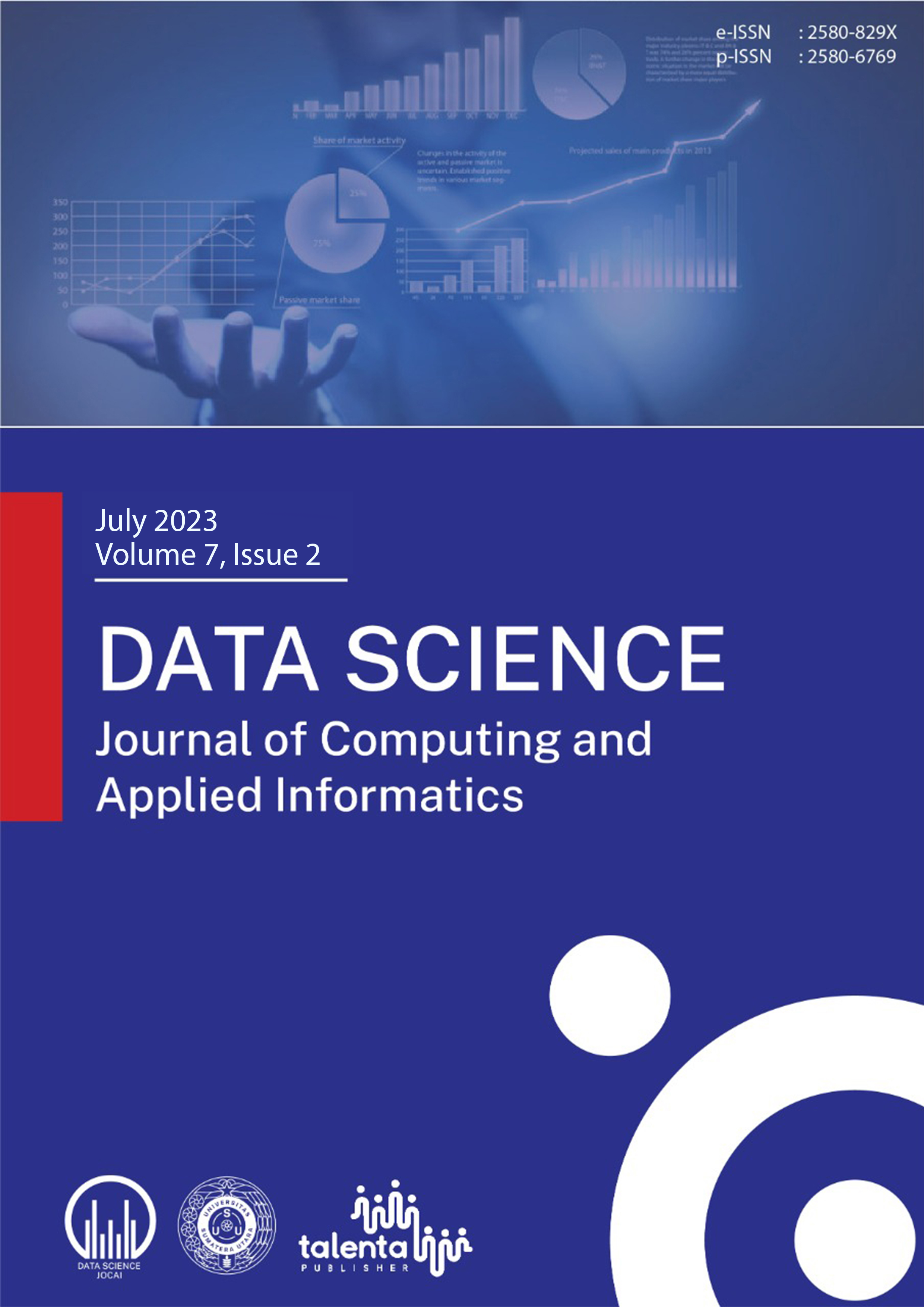Time Series Prediction of Bitcoin Cryptocurrency Price Based on Machine Learning Approach
DOI:
https://doi.org/10.32734/jocai.v7.i2-14356Keywords:
Bitcoin, Cryptocurrency, Machine LearningAbstract
Over the past few years, Bitcoin has attracted the attention of numerous parties, ranging from academic researchers to institutional investors. Bitcoin is the first and most widely used cryptocurrency to date. Due to the significant volatility of the Bitcoin price and the fact that its trading method does not require a third party, it has gained great popularity since its inception in 2009 among a wide range of individuals. Given the previous difficulties in predicting the price of cryptocurrencies, this project will be developing and implementing a time series approach-based solution prediction model using machine learning algorithms which include Support Vector Machine Regression (SVR), K-Nearest Neighbor Regression (KNN), Extreme Gradient Boosting (XGBoost), and Long Short-Term Memory (LSTM) to determine the trend of bitcoin price movement, and assessing the effectiveness of the machine learning models. The data that will be used is the close prices of Bitcoin from the year 2018 up to the year 2023. The performance of the machine learning models is evaluated by comparing the results of R-squared, mean absolute error (MAE), mean squared error (RMSE), and also through a visualization graph of the original close price and predicted close price of Bitcoin in a dashboard. Among the models compared, LSTM emerged as the most accurate, followed by SVR, while XGBoost and KNN exhibited comparatively lower performance.
Downloads
References
Abdallah, Z., Du, L., & Webb, G. (2017). Data Preparation. Encyclopedia of Machine Learning and Data Mining, pp 318-327, 2017.
Burges, C. J. C. (1998). A Tutorial on Support Vector Machines for Pattern Recognition. Data Mining and Knowledge Discovery, 2(2), 121-167.
Chapman, P., Clinton, J., Kerber, R., Khabaza, T., Reinartz, T. P., Shearer, C., & Wirth, R. (2000). CRISP-DM 1.0: Step-by-step data mining guide.
Edwards, J. (2022, July 2, 2022). Bitcoin's Price History. Investopedia. Retrieved November 30, 2,022 from https://www.investopedia.com/articles/forex/121815/bitcoins-price-history.asp
Hochreiter, S., & Schmidhuber, J. (1997). Long Short-term Memory. Neural Computation, 9, 1735-1780.
Hotz, N. (2022). What CRISP-DM DM? https://www.datascience-pm.com/crisp-dm-2/
Hyndman, R. J., & Koehler, A. B. (2006). Another look at measures of forecast accuracy. International Journal of Forecasting, 22(4), 679-688.
Matkovskyy, R., & Jalan, A. (2019). From financial markets to Bitcoin markets: A fresh look at the contagion effect. Finance Research Letters, 31, 93-97.
McNally, S., Roche, J., & Caton, S. (2018). Predicting the Price of Bitcoin Using Machine Learning. PDP), Cambridge, UK, 2018, pp. 339-343, doi: 10.1109/PDP2018.2018.00060.
Morde, V. (2019). XGBoost Algorithm: Long May She Reign! https://towardsdatascience.com/https-medium-com-vishalmorde-xgboost-algorithm-long-she-may-rein-edd9f99be63d
Mudassir, M., Bennbaia, S., Unal, D., & Hammoudeh, M. (2020). Time-series forecasting of Bitcoin prices using high-dimensional features: a machine learning approach. Neural Computing and Applications. doi: 10.1007/s00521-020-05129-6
Muniye, T., Rout, M., Mohanty, L., & Satapathy, S. (2020). Bitcoin Price Prediction and Analysis Using Deep Learning Models. In (pp. 631-640). doi: 10.1007/978-981-15-5397-4_63
Murray, K., Rossi, A., Carraro, D., & Visentin, A. (2023). On Forecasting Cryptocurrency Prices: A Comparison of Machine Learning, Deep Learning, and Ensembles. Forecasting, 5(1), 196–209.
Norwawi, N. M. (2021). Sliding window time series forecasting with multilayer perceptron a multi regression of COVID-19 outbreak in Malaysia. Data Science for COVID-19, 547–564. doi: 10.1016/b978-0-12-824536-1.00025-3
Rahouti, M., Xiong, K., & Ghani, N. (2018). Bitcoin Concepts, Threats, and Machine-Learning Security Solutions. IEEE Access, 6, 67189-67205.
Sabry, F., Labda, W., Erbad, A., & Malluhi, Q. (2020). Cryptocurrencies and Artificial Intelligence: Challenges and Opportunities. IEEE Access, 8, 175840-175858.
Söze, K. (2017). Bitcoin guidebook for beginners: two books in one: Bitcoin Blueprint & Invest in digital gold wallets, Bitcoin ATM-s, Bitcoin mining, investment, and trading. Createspace Independent Publishing.
Zhang, S., Li, M., & Yan, C. (2022). The Empirical Analysis of Bitcoin Price Prediction Based on Deep Learning Integration Method. Computational Intelligence and Neuroscience, 2022, 1265837.
Downloads
Published
How to Cite
Issue
Section
License
Copyright (c) 2023 Data Science: Journal of Computing and Applied Informatics

This work is licensed under a Creative Commons Attribution-ShareAlike 4.0 International License.















